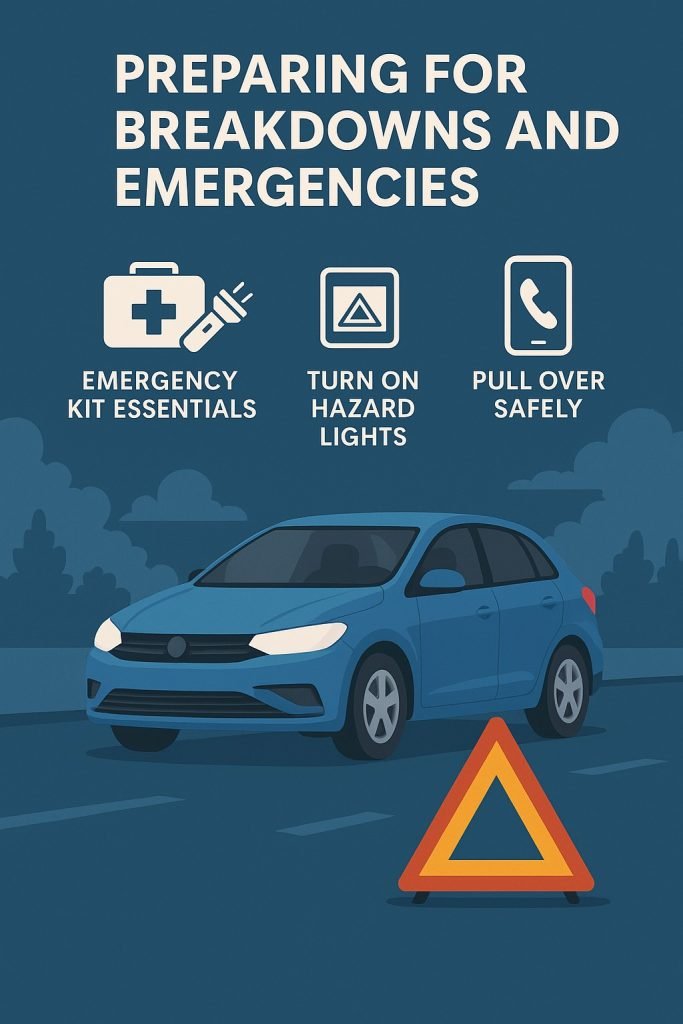
Introduction
Even the most reliable vehicles can experience unexpected breakdowns or emergencies. Being prepared not only reduces stress but also keeps you and your passengers safe until help arrives. Knowing what to carry in your car and how to respond in different situations is an important part of responsible driving.
Emergency Kit Essentials
-
Basic Tools: Flashlight with extra batteries, jumper cables, tire pressure gauge, and a basic toolkit.
-
Tire Care: Spare tire, jack, and lug wrench.
-
Safety Gear: Reflective triangles, flares, and a reflective vest to increase visibility.
-
First Aid Supplies: Bandages, antiseptic wipes, and basic medications.
-
Comfort Items: Bottled water, snacks, warm blanket, and phone charger.
What to Do in a Breakdown
-
Stay Calm: Do not panic—assess the situation.
-
Pull Over Safely: Move to the shoulder or a safe area away from traffic.
-
Turn on Hazard Lights: Warn other drivers of your situation.
-
Use Reflective Devices: Place triangles or flares behind your car, especially at night or in poor visibility.
-
Call for Help: Contact roadside assistance, a tow truck, or emergency services if necessary.
-
Stay in the Vehicle if Unsafe: If you are on a busy highway, remain inside with your seatbelt on until help arrives.
Why Preparation Matters
-
Reduces danger in stressful situations.
-
Helps you get back on the road faster.
-
Ensures you can take care of yourself and passengers until professional help arrives.
Takeaway
Breakdowns and emergencies can happen to anyone—but with the right tools, supplies, and knowledge, you can stay safe and in control until help arrives.
